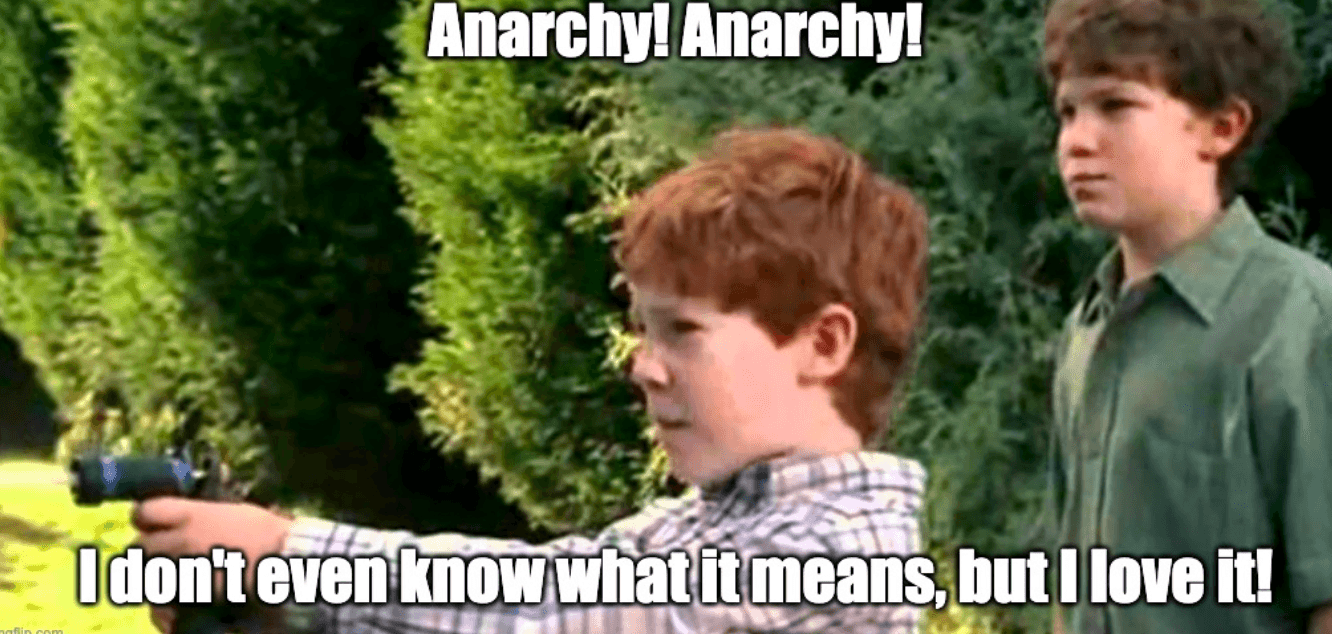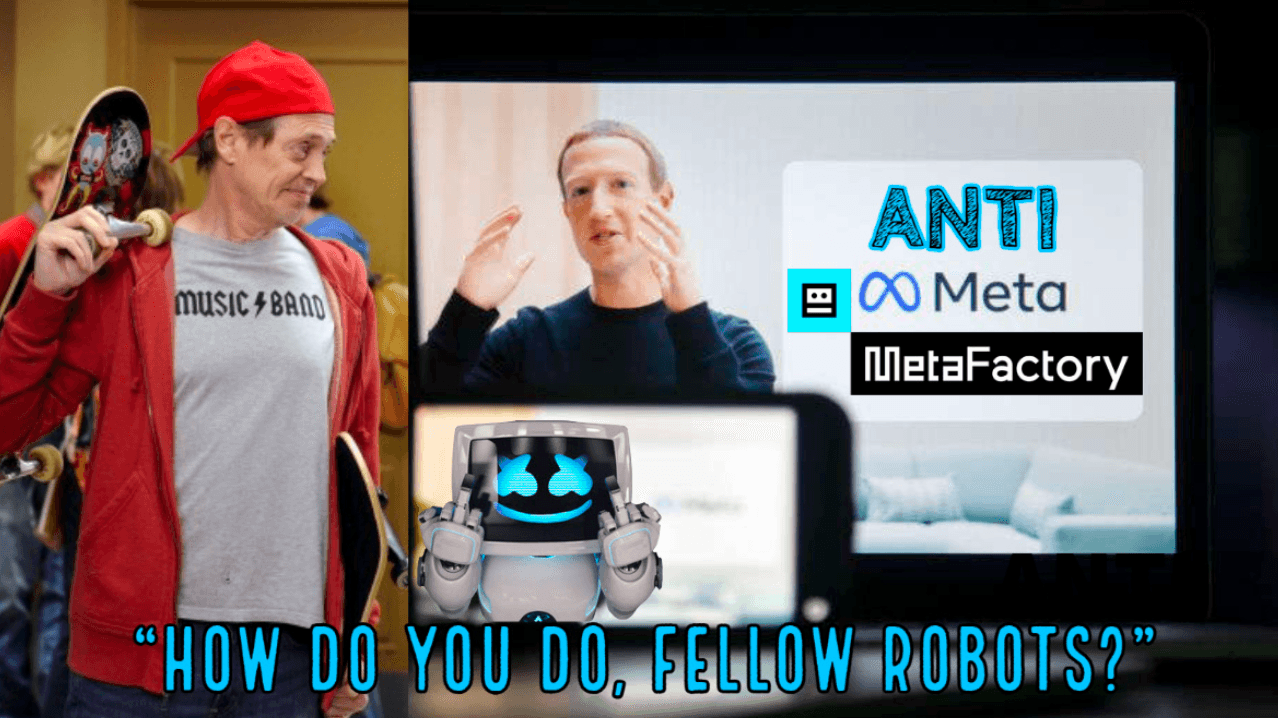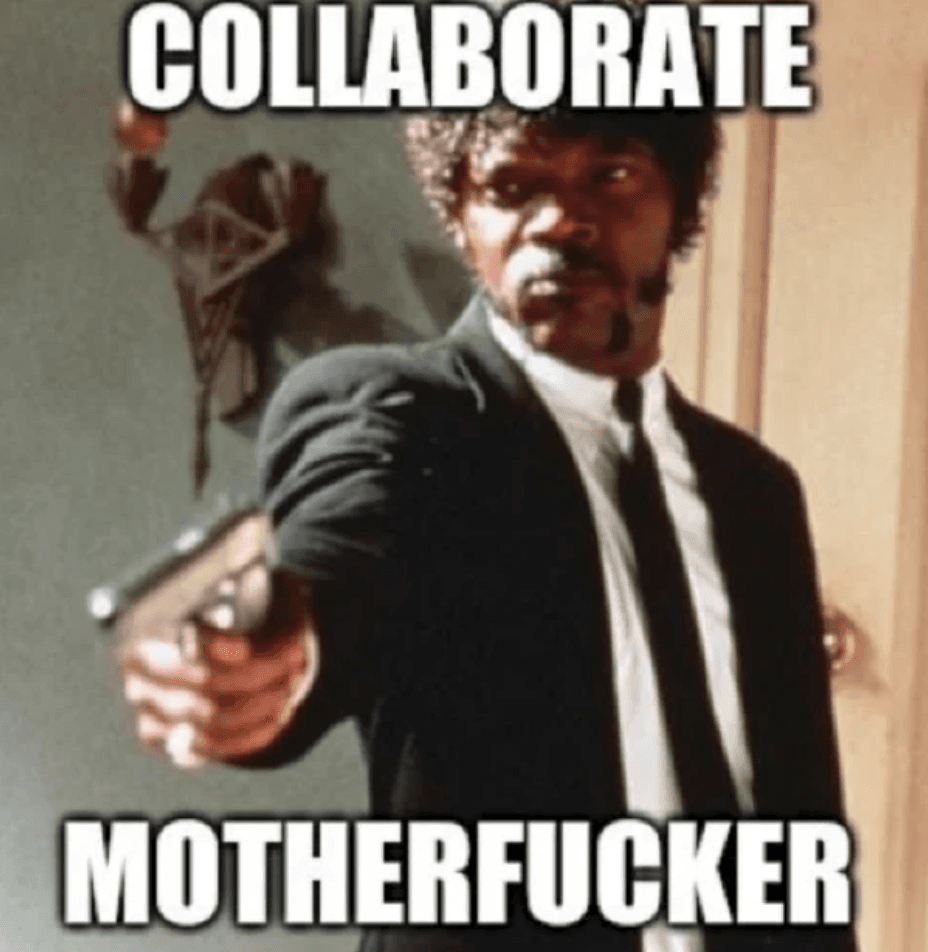Key Insights
- Working groups are an organizational structure born out of anarchistic organizations
- Anarchy in this context is not a society with no rules, but rather self-governance based on consensus
- Wildfire DAO and Metafactory DAO are real-world examples of DAOs successfully implementing working groups
Introduction
This article is inspired by a tweet where I asked: What about DAOs do you want to learn more about? What are your burning questions?
Frisson replied that he’s interested in understanding how working groups are implemented from a Trustware and Socialware perspective. His response generated many likes, providing the social signal that I needed to start researching the topic.
If you don’t know what is Trustware and Socialware, check out this simple to understand TikTok video from Bankless. In short, Trustware is a term used to describe a DAO’s code and tech (think Moloch and Governor contracts), while Socialware is used to describe the human coordination layer (think chat and emoji polls).
Coincidentally, around the same time as my Tweet, I was getting ready to start writing an article for BlockScience about the concept of Autonomy. The goal of the article was to unpack the term (which, not surprisingly, given its complexity, frequently gets muddled in Web3). I would be using established principles from the field of Cybernetics — specifically a chapter from Anarchist Cybernetics, a book by Author and Political Theory Lecturer Thomas Swann.
While reading through the Anarchist Cybernetics literature, working groups came up several times. I was surprised to learn that working groups are an organizational structure born out of anarchist organizations!

Anarchy is a pop culture slogan
In the spirit of collaboration and positive-sum thinking, I decided to incorporate my learnings from the BlockScience article in this post.
In this post, you can expect to learn about Anarchism and Cybernetics in the context of DAOs, which are emerging self-organizing systems that experiment with organizational structures such as working groups.
Wildfire DAO and MetaFactory DAO are two organizations that successfully use working groups. I reached out to OmnistraMatt and DAOFren, active contributors to Wildfire and MetaFactory, respectively, and they both generously agreed to be interviewed for this post.
Without further ado, let’s dig in.
Introduction to Working Groups and Anarchy
Working groups are small teams of people with similar expertise and interests who work together on shared goals. Working groups go by many other names, such as two-pizza teams, pods, and swarms.
Anarchy (and the associated philosophy, anarchism) is a really complex topic that I am not qualified to unpack in this post. However, I will leverage my learnings from Anarchist Cybernetics to contextualize Anarchy, as an organizational theory, to working groups, emerging organizational structures, in DAOs.
The important thing to remember about anarchy is that it is very different from its depiction in popular culture.
Anarchy, in pop culture, is a catchy slogan. In movies and TV shows, anarchy usually manifests as a belligerent society with no rules, where people swing pick-axes and yell at each other to get what they want.
In reality, anarchistic organizations have rules. The rules, however, are not created or enforced by an institution or hierarchical structure. Members of anarchistic organizations self-govern to establish rules that all members agree on, or, at the very least, can live with.
The rest of the post is structured as follows:
-
First, I give a brief history of Anarchistic Organizations from Cybernetics literature.
-
Then, I present the concept of “Autonomy” and how it applies to working groups, using The Occupy Wall Street Movement as an example.
-
Then, I present two case studies (Wildfire DAO and MetaFactory DAO) to show real-world examples of how DAOs use working groups.
-
Finally, in the conclusion, I tie it all together and answer the question: how are working groups implemented in DAOs from a Trustware and Socialware perspective?
A Brief History of Anarchistic Organizations
A Cybernetics Perspective
Cybernetics, a field that is concerned with Systems Theory and Design, provides useful insights into the structure of self-organized systems
Autonomy is an important concept that appears frequently in Cybernetics and Anarchistic literature, and has even made its way into the name of the emerging entities that we are building: “Decentralized Autonomous Organization.”
We can look to the late Anarchist and Writer, Colin Ward, and the Author and Philosophy Lecturer, Thomas Swann, to contextualize the concepts of Anarchy and Autonomy in self-organized systems.
In his 1966 essay Anarchism as a Theory of Organization, Colin Ward writes:
Anyone can see that there are at least two kinds of organisation. There is the kind which is forced on you, the kind which is run from above, and there is the kind which is run from below, which can’t force you to do anything, and which you are free to join or free to leave alone. We could say that the anarchists are people who want to transform all kinds of human organisation into the kind of purely voluntary association where people can pull out and start one of their own if they don’t like it.
He goes on to draw a parallel between Cybernetics and Anarchism:
Cybernetic theory with its emphasis on self-organising systems, and speculation about the ultimate social effects of automation, leads in a similar revolutionary direction [as anarchism].
Autonomy
Thomas Swann proposes four different types of autonomy, that are outside the scope of this post. However, I want to present a key takeaway which is that autonomy is relevant to goal-setting. Members of self-organizing systems like a DAO need to have the ability to set their own goals.
Swann stresses the importance of autonomy in his essay Anarchist Cybernetics. He references Nicholas Walter, one of Colin Ward’s close associates, when he writes this passage about how autonomy, specifically local autonomy, gives a self-organizing system stability:
In social and political systems, it is not through dictatorial command and authoritarian constraint but through freedom and democracy that forms of organization can best meet their goals and remain stable. While self-organization in mechanical or electrical systems looks quite different from self-organization in anarchist groups and communities, Walter suggested that there is a crucial parallel between them: decision-making must happen at the most local level possible, and cohesion comes through the interplay between the parts of the system, which are themselves fundamentally autonomous.
Applying Autonomy to Working Groups
At their core, working groups provide a coordination layer for self-organizing autonomous organizations.
Although we can debate how successful the Occupy Wall Street Movement was, it was nonetheless one of the largest experiments in anarchistic organization and serves as a good example of working groups in action.
Working Groups in the Occupy Wall Street Movement
In the Occupy Wall Street Movement, groups of people self-organized and were given a high-level of autonomy. They coordinated with one another through formal and informal communication and were bound by decisions made at the General Assembly or Spokes Council. Very importantly, these institutions were not management oversight but rather forums for consensual agreement and negotiation. All members participated in these processes either directly (in the General Assembly), or through delegates (at the Spokes Council).
Working Groups in DAOs
Michael Zargham, a data and decision systems engineer, and founder of BlockScience, and Kelsie Nabben, a researcher in decentralized technology communities, write in their paper, Aligning Decentralized Autonomous Organization’ to Precedents in Cybernetics:
The term “DAO” first appeared in relation to blockchain technology in an article by Ethereum’s co-founder Vitalik Buterin in Bitcoin Magazine in 2013. “What is a corporation?” asks Buterin, “it’s nothing more than people and contracts all the way down.” This conception of DAOs perpetuates the “cypherpunk” ideology of anarchic self-organization.
Olly.eth, a DAO Writer and Operator, takes self-organization a step further in his essay DAOs as Novelty Search Engines where he explains why working groups are important.
He writes:
DAOs are novelty search engines which can more efficiently explore a search space by enabling many cooperating teams to collect and integrate stepping stones.
This capability suggests a unique and interesting role in the future of innovation. Where we end up is unpredictable, but predictably interesting.
Olly goes on to write about local autonomy:
Similarly, in a mature DAO, individuals will be able to understand a part of the network (local context), but they will not be able to appreciate it as a whole (global context).
I infer that when Olly refers to a mature DAO, he means an organization with more than 10 contributors because the rule of thumb in DAOs, as I have gathered from conducting the two interviews in this article, is that working groups are not necessary if there are less than 10 contributors. DAOs of this small size need all-hands on deck to ruthlessly focus on their core mission and purpose.
Working Groups Case Study#1: Wildfire DAO
Wildfire DAO is a meta-governance initiative that was born out of 🔥_🔥DAO (FireEyes). Fire Eyes was started in July 2020 by James Waugh, Cooper Turley, Lucas Campbell and Callum Gladstone as a Web3 governance DAO that provides services like token design, incentive mechanisms, governance structures, and launch strategy.
From Wildfire’s launch post, it’s clear that they value working groups. Here they write:
Wildfire is a meta-governance initiative to connect and align community members from across the ecosystem, creating new squads to tackle token design, governance, and coordination problems in an open and collaborative manner.
I was eager to interview a Wildfire core contributor so I reached out to OminstraMatt who kindly agreed to be interviewed for this article.
The Wildfire Story
Earlier this year, Wildfire put out an open application for the genesis squad of core operators. Matt was selected to be one of sixteen core operators.
Note: At launch, Wildfire used the term “squads” to refer to working groups, but they have since started to use the term “working groups” in their formal and informal communications.
One of the first things that Matt told me is that Wildfire intentionally did not define an initial plan. The four founders did not tell the working group operators what to work on or how to do their work. The intention was to have the working groups operate in a highly autonomous manner, which means operators could choose their own goals and approach.
Wildfire has four working groups:
-
Infrastructure
-
Creator Economy
-
Public Goods
-
DeFi
Each working group operates independently, but is nested under the umbrella of Wildfire’s overall mission and purpose. As described in Wildfire’s Hello World post, the DAO’s mission is two-fold:
to tailor the next wave of web3 growth [by having a continued voice in prominent governance conversations] in favor of the users and the builders, rather than further enriching the pockets of the few.
make members feel empowered for their contributions regardless of social status or capital holdings — creating a new paradigm for digital careers to proliferate.
In practice, it works like this: Fire Eyes delegates governance tokens(e.g. $ENS for ENS DAO) to Wildfire Working Group Operators, who go off and participate in the projects’ governance, and cast votes.
When I asked Matt how he knows which way to vote, he told me that it’s based on a feeling of intuition, acquired through deep experience in DAO governance.
To understand why Matt’s answer makes sense for DAOs, let’s think about an ant colony which is a self-organized autonomous system found in nature.

An ant colony is a self-organized autonomous system found in nature
Ants communicate with one another through a highly evolved scent mechanism. Individual ants follow their own intuition, which on a global scale creates a super organism that can accomplish great feats –feats that an individual ant alone cannot do.
However, as Kevin Munger, Political Science Researcher at Penn State, points out in his article Tipping the Scale, ants and humans are not an apples-to-apples comparison.
So each human, unlike a bee in a hive or an ant in its anthill, is both a unique individual and a contributor to a robust society. Where the individual ant is essentially worthless and only the collective of ants really counts as an organism, humans and their society are co-equal and intertwined.
Unlike ant colonies, humans in emerging self-organized systems (DAOs) can communicate with one another through story, lore, and chat platforms like Discord. This makes human intuition robust and complex. So the more experience that Wildfire operators acquire, the more fine-tuned their intuition becomes and the better governance decisions they can make.
In practice, Wildfire working groups are nested, operating both globally and locally to collect and disseminate knowledge. On a global level, operators develop their intuition by participating in discussions across the DAO ecosystem. They then share their acquired knowledge locally with their working group. This local knowledge then gets shared globally, and the feedback loop continues.
Meta-coordinators like Vengist act like a bridge between the global DAO ecosystem and local working groups, helping to disseminate knowledge.

From Wildfire’s Discord

From Wildfire’s Discord
Shawn16400 describes meta-coordinators as “roaming wizards who connect the dots across DAOs.”

From Wildfire’s Discord

From Wildfire’s Discord
Working Groups Case Study#2: MetaFactory DAO
MetaFactory’s mission is to advance Ethereum by spreading and proliferating Web3 culture. Initially known as SwagDAO, MetaFactory manufactures and sells high-quality sustainable fashion apparel. On their marketplace, you can find drops for top Ethereum projects like Sushi, Bankless, and Gitcoin. MetaFactory is not only innovating on apparel, it’s also revolutionizing organizational structures, working styles, and incentives.
The content below is based on an interview with DAOFren, an early contributor of MetaFactory,
DAOFren told me that working groups at MetaFactory emerged out of necessity. First, there were only two working groups: Business development and Administrative. Then, a third working group spawned: Technical Development. As people started to experiment with drops, more working groups emerged.
Today, MetaFactory has the following six working groups:
-
Berlin Microfactory
-
Working Design
-
Admin/Business Development
-
NYC Microfactory & Fulfillment
-
Development
-
Digital XR Metaverse
Information gets communicated across the working groups through documentation.
DAOFren stressed the importance of setting good documentation practices and habits early-on (e.g, via designated scholars). Contributors like to use HackMD, Miro, Figma, and Notion. Notion was an important source of truth for project management, but is now being migrated to MFOS: MetaFactory’s custom developed solution for full-scale, Web3, and physical production needs.
What’s another key way for MetaFactory to communicate information? Memes! Always seize the memes of production and coordination.
As MetaFactory’s co-founder Drew Harding likes to say, “You can’t beat someone who is having fun.”

From MetaFactory’s Forum
Memes are used to disseminate narratives and align members across local autonomous working groups, with the DAO’s global shared values.
The above meme, for example, reminds contributors that MetaFactory is the real meta and has been leading innovation from the very beginning with projects like cryptographically verifiable Kong chips embedded into “digiphysical” products.
Conclusion
When a DAO grows to more than 10 contributors, its goals also grow. Members need to break up into working groups to effectively coordinate locally, across working groups, and globally, across the broader DAO ecosystem, while maintaining tight communication.
A DAO with working groups requires meta-coordinators, who act like information lifelines and build bridges across working groups and to the broader DAO ecosystem. It’s important to note that meta-coordinators are at risk of being spread too thin and, in turn, burning out, especially if the scope of their work is too broad.
Socialware: peer-to-peer social communication — continues to be the primary way that working groups coordinate and share information and knowledge. Discord conversations, weekly status meetings, emoji polls, and information repositories like Notion, HackMD, and Figma serve as important feedback loops that enable DAO contributors to experiment and make progress on their autonomous goals.
Trustware: code and infrastructure — is necessary to coordinate governance activities like proposal creation and voting, but it is just one part of the overarching DAO system.
Without socialware, DAOs become ineffective and fail.
Thanks for sticking around and job well done on making it to the end of this article!
Here’s a fun meme to keep in mind as you contribute to DAOs and play positive-sum coordination games!

From MetaCartel’s Telegram Group